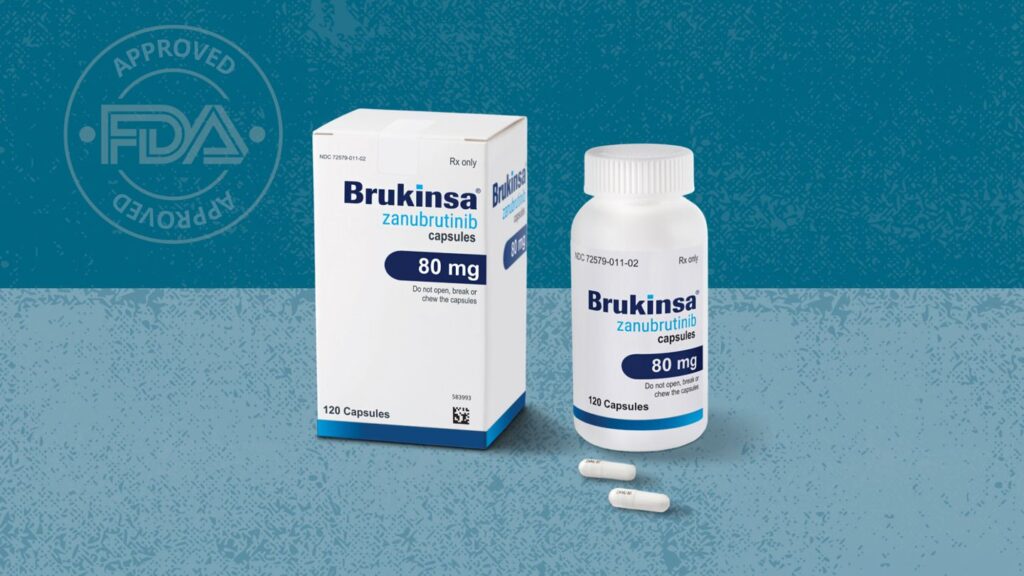Feb 2023: Zanubrutinib (Brukinsa, BeiGene USA, Inc.) is approved by FDA for chronic lymphocytic leukemia (CLL) or small lymphocytic lymphoma (SLL).
SEQUOIA was used to assess effectiveness in CLL/SLL patients who had not received treatment (NCT03336333). A total of 479 patients were randomized 1:1 to receive either zanubrutinib until disease progression or unacceptable toxicity or bendamustine plus rituximab (BR) for 6 cycles in the randomized cohort that included patients without 17p deletion. Progression-free survival (PFS) was the primary efficacy outcome metric, as established by a separate review committee (IRC). In the zanubrutinib arm, the median PFS was not achieved (95% CI: NE, NE), but in the BR arm, it was 33.7 months (95% CI: 28.1, NE) (HR= 0.42, 95% CI: 0.28, 0.63; p=0.0001). For PFS, the estimated median follow-up was 25.0 months. Zanubrutinib was assessed in 110 patients with previously untreated CLL/SLL with a 17p deletion in a different non-randomized cohort of SEQUOIA. IRC reported an overall response rate (ORR) of 88% (95% CI: 81, 94). After a median follow-up of 25.1 months, the median duration of response (DOR) had not yet been attained.
ALPINE assessed the effectiveness in patients with relapsed or refractory CLL/SLL (NCT03734016). 652 participants in total were randomly assigned to either zanubrutinib or ibrutinib. 1 was the median number of previous lines of treatment (range 1-8). ORR and DOR were the primary efficacy outcome measures at this point in the response analysis, according to an IRC. The ORR for the zanubrutinib arm was 80% (95% CI: 76, 85) and for the ibrutinib arm was 73% (95% CI: 68, 78) (response rate ratio: 1.10, 95% CI: 1.01, 1.20; p=0.0264). After a median follow-up of 14.1 months, neither arm had reached the median DOR.
The most frequent side effects of zanubrutinib (30%) included bleeding (42%), lower respiratory tract infection (39%), decreased platelet count (34%), decreased neutrophil count (42%), and musculoskeletal pain (30%). In 13% of individuals, secondary primary malignancies, such as non-skin carcinomas, occurred. 3.7% of patients had atrial fibrillation or flutter, while 0.2% of patients had ventricular arrhythmias grade 3 or above.
Until the disease progresses or there is intolerable toxicity, the recommended zanubrutinib dosage is 160 mg taken orally twice day or 320 mg taken orally once daily.
View full prescribing information for Brukinsa.


